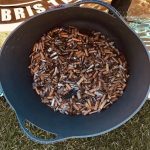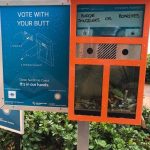Ten Little Pieces – Cigarette Butt SRP
Source Reduction Plan (SRP) Overview
Name of SRP
Partners Delivering the SRP
- Sunshine Coast Council (including Council Parks and Gardens maintenance teams)
- Cleanwater Group
- EnviroCom
- The Australian Industry Trade College
- Clean Up Australia
- Sea Shepherd – Sunshine Coast Marine Debris Team
- Ten Little Pieces community members & local businesses
- Alexandra Headland Community Association
- Alex Surf Club
Location
Alexandra Beach on Australia’s Sunshine Coast
Photo 1
Evidence of the issue

Photo 2
Evidence of SRP resources

Photo 3
Evidence of positive outcomes
Overall Goals & Background
Targeted Debris
Cigarette butts.
Why is the SRP needed?
Cigarette butts are the world’s most common type of marine debris and have been documented to negatively impact biodiversity, ecosystems, human health, and the economy.
The area borders the Coral Sea, home to 300 endangered, threatened, and vulnerable species including the endangered loggerhead turtles that nest on the region’s beaches and the humpback whales that migrate through these waters.
Ten Little Pieces led by Alison Foley conducted a social experiment of cigarette butt littering behaviour modification through the installation of a Cigarette Butt Voting Ballot Box (CBVBB).
Logistics
Timeline and Project Goals
Research conducted over a 12-week period.
Measuring Success
The research piece involved the CBVBB unit, social media efforts, the involvement of community groups, directional signage, and weekly incidental litter collections, all of which combined to provide evidence of modified cigarette butt littering behaviour at Alexandra Beach.
The plan considered the NSW EPA recommended intervention aspects about cigarette butt littering behaviour modification, successfully demonstrated by the Butt Free Byron Campaign.
Factors considered:
- The availability of and proximity to appropriate disposal units
- The absence of accumulated cigarette butt debris
- The knowledge of the environmental consequences of cigarette butt littering
- The knowledge of and likely enforcement of fines.
Data Collection & Reporting
The CBVBB was installed at a high-traffic juncture and popular tourist destination – the Alexandra Headland Surf Life Saving Club, just before the Easter School holidays, alongside a large information board which provided data updates and informed the public of the environmental consequences of cigarette butt litter.
Directional signage was installed on all existing bins across the area, and “Vote With Your Butt” posters were also distributed to local businesses to engage the wider community in the campaign.
Over 12 weeks, Alison serviced the CBVBB weekly to collect data, maintain cleanliness, and change the voting question to encourage participation through a game. Data for incidental counts of cigarette butts around the location was also gathered, and all results were entered into the AMDI Database.
Additional data was contributed throughout the trial period by:
- Parks and Gardens maintenance teams from Sunshine Coast Council, who conducted weekly incidental cigarette butt monitoring
- Cleanwater Group, who provided monthly counts from the Gross Pollutant Traps installed in stormwater drains within the area, facilitated by students from the Australian Industry Trade College
- EnviroCom provided historical data counts of cigarette butts from previous clean-ups in the area
- Baseline, mid-trial, and post-trial clean-ups supported by Clean Up Australia, Sea Shepherd – Sunshine Coast Marine Debris Team, Ten Little Pieces community members, local businesses, the Alexandra Headland Community Association, and the Alex Surf Club.
Throughout the trial period, Alison also undertook 72 population surveys to gather additional qualitative data about perceptions of cigarette butt litter and incentives for behaviour change, the Alexandra Headland Community Association, and the Alex Surf Club.
Results and Reflections
Positive Outcomes
Results showed a massive 70% reduction in incidental cigarette butt litter at the trial location throughout the trial period, with over 10,964 cigarette butts collected in total.
This is a shining example of what can happen when committed community groups and citizens collaborate with local councils and businesses to work together towards solutions.
In her comprehensive project report, Alison makes several cigarette butt litter prevention recommendations, including:
- At the site of the CBVBB, invest in permanent infrastructure for the safe and appropriate disposal of cigarette butts, with adequate signage.
- Retrofit existing cigarette butt disposal units with bright colours and horizontal signage.
- The enforcement of smoking exclusion zones at the adjacent Skate Park and anti-littering laws in relevant locations.
- Installation of stencils on stormwater drains “the sea starts here, don’t litter”
- Expansion of the technology and methodology to other cigarette butt littering hotspots across the region.
- Encourage product stewardship of tobacco retailers across the region
- Education, awareness, and media campaigns.
To receive a copy of Alison’s report, please email tenlittlepieces@gmail.com
Funding
Funded by Sunshine Coast Council.
Challenges & Improvements
Future Opportunities
The success of this cigarette butt source reduction plan paves the way for future Ditch The Flick and cigarette butt campaigns






